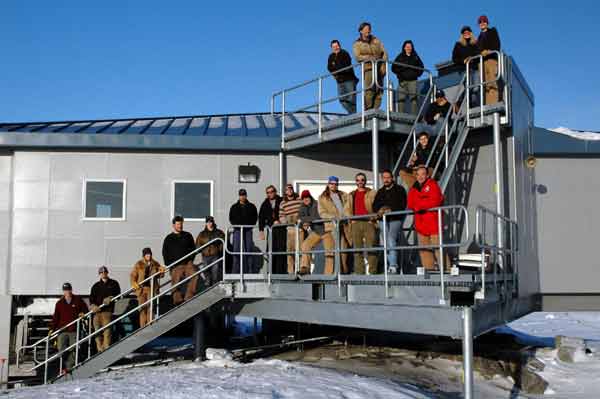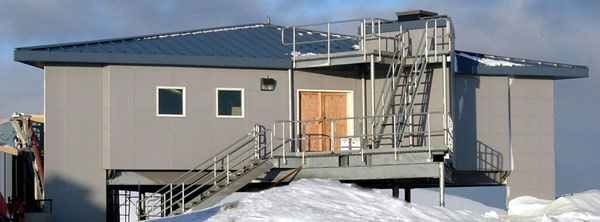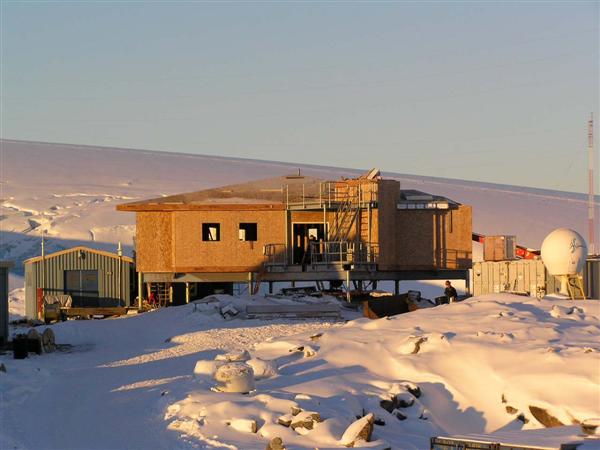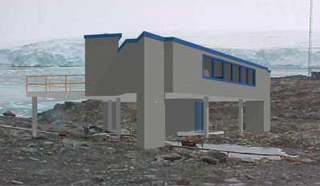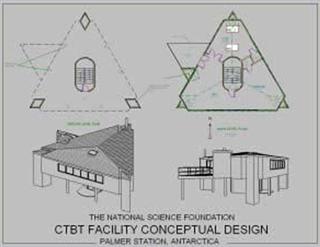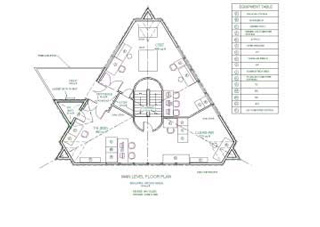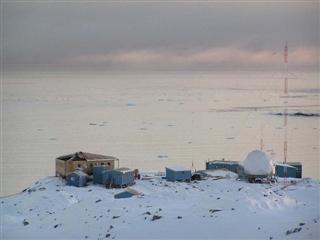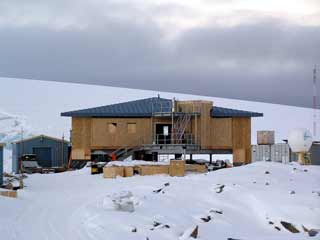IMS Building
|
When the building was being constructed, The IMS was a part of the DOE Environmental Measurements Laboratory (EML) operated jointly with the University of Miami as the Remote Atmospheric Measurements Program (RAMP). This project has been underway at Palmer Station for many years, monitoring for radionuclides from releases of radioactivity--most likely as an effort to sample for radioactive molecules from natural or artificial sources. The main artificial source of concern was nuclear weapons tests; monitoring for these was being conducted worldwide as part of the Comprehensive Test Ban Treaty--hence the acronym CTBT--which also has been used to refer to this science project. Since at least the early 90's this project has been tended by the science tech; it occupied space in T5 (a 1998 photo of the bench from the old project website). Later, the project operation shifted to the DHS, and more recently the project has been operated by General Dynamics as a technical event (T-998). The operation includes high-volume air samplers and gamma ray spectrometers. The filters are initially checked locally; the filters and data are now sent back to the Comprehensive Nuclear-Test-Ban Treaty Organization (CTBTO) headquarters in Vienna, Austria. There are several other Antarctic CTBT atmospheric and seismic monitoring stations including Pole. So far, the Antarctic stations have seen only naturally-occurring radionuclides, Be-7 (an isotope of beryllium) and Pb-210 (an isotope of lead). The Palmer Station building had occasionally been referred to as "T6" as a reference to one of the structures it was to replace--T5 and CAF were to be demo'd after the new building was in full operation, but they are both still around. Enough acronyms, back to reality... | |
| The September photo at the top of this page is by Kelvin Mar; the August photo is by manager James Slaughter and appeared in an August sitrep. The other photos are from Glenn Grant except for the utilidor view which was released by RPSC FEMC. The drawings and conceptual views (which were only preliminary and changed significantly during the design process) are from the full 2003 Palmer Area Users' Committee minutes (no longer online). | |
